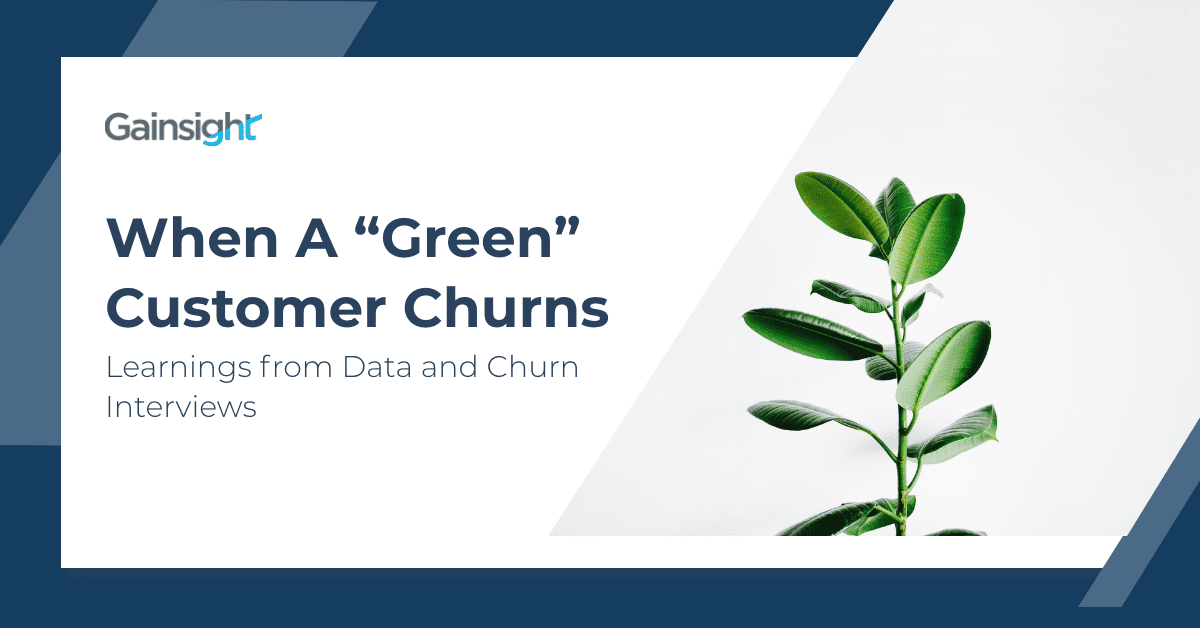Have you ever had a customer churn unexpectedly? It’s never easy, especially when they are a “green” customer from all indications and health scores. So, how do you plan for it? Or can you? Iceberg IQ, is proficient in the customer-exit interview. They advise that there rarely is such a thing as a “blind churn.” Customers are not prone to leave without reason. A deep-level interview can often uncover the root cause, usually a combination of numerous reasons.
The Churn Interview
The Churn Interview is similar to reverse-engineering. What you are exposing are the negative aspects of the customer’s experience while on their journey with your company. It reveals what in your product, processes, systems, and even personnel failed them. The insight is as good as gold! You can utilize the information to help your current and future customers and maybe bring your churned customer back. However, Iceberg IQ did share one golden nugget of wisdom—your customers are lying to you. Yes, that’s right. For instance, during an Executive Business Review (EBR), you may be happy to learn that a green customer wants to renew for a year contract. But heads up! They may be using that year to buy time while they look for alternatives solutions.
The customer’s churn interview will reveal truths unseen through the personal relationship with your customer success professional responsible for the account. Perhaps through data analysis combined with the best CS practices, you can identify risk. However, you must analyze the unhealthy and churned, but the healthy customer too for a truly holistic understanding of churn.
Main Reasons for Green Churn
- Lack of Self-Evident Value
There are a few direct reasons good customers leave. One of the first is the lack of self-evident value. User adoption doesn’t necessarily equate to value for the end-users, especially if their executives mandate your product. Users may use only essential functions. Passive sentiment may grow with certain highly-influential users and could turn negative without intervention. This scenario requires bringing to light the demonstrable impact your product has on your customer’s performance metrics. For example, perhaps your product replaced a stand-alone process. It may not save an individual contributor much time. However, the automation and data the system offers the customer’s company in aggregate may have a broad impact.
Gainsight PX has an answer to this problem. It has robust yet straightforward analytic functionality. CSMs or any customer-facing team member can uncover the use and features that the user may not use often or at all. You can aid the user through journey analysis, tracking each step, including where they cannot complete tasks or have stopped usage. This product enables you to contact the user within the product with in-app messaging, guides, and surveys. With this data in a centralized location, you have a bevy of information to share with the customer proving product value.
- General Lack of Value Attained
As a CSM, you have to communicate how value is being delivered continually. This information can’t come only during an EBR. There must be diligent, constant data analysis, especially when the customer doesn’t reach their metric and desired goals.
The root cause might be an onboarding issue. The customer may not have received proper training. Without it, there is no momentum to start. But training doesn’t have to be in a classroom anymore. In PX, we can integrate instructional videos that help improve onboarding and adoption. PX also can have embedded video from an LMS to help instruct users. Or even just a video hosted in Vimeo or Wistia that serves up education information in-product. There is even a Knowledge Center Bot dialogue box to aid users.
In-app messaging facilitates and points to appropriate features that could help the customer increase usage and value. You can also track logins, observe which features and functions are used most, and message the user through emails to get them re-engaged. In PX, you can show and measure the impact on adoption and retention while verbalizing the value to the customer in your meetings or EBRs.
- Health Score Might Be Wrong
In this case, essentially, the right metrics aren’t established at the beginning of the customer journey. Over time those same metrics are continuously measured and assumed to be valid indicators of health. In a sense, you get false positives. To alleviate this pain point, reevaluate your health score model and related metrics regularly. This situation is not a “set it and forget it.”
Churn analysis will reveal what was failing for companies in similar segments, industries, and fields. In Gainsight PX, you can compare customers in cohorts to see if it is an individual customer, a segment, or is it the product itself that is the problem.
- Reduction of Tech Stack
Software reduction and consolidation are typical in times of economic uncertainty. Commonly, customers are seeking to reduce tech stack spend by paring down unused or redundant software. In this process, even the best of breed solutions don’t always win. Sometimes the “just good enough but cheaper” solution wins out.
With Gainsight, we say that PX and our CS product are better together. What needs to be heavily conveyed to the customer is the time, value, and effort expended to date in your product. Switching costs and the pain of replicating even a fraction of our platform’s capabilities outweigh their potential churn. If necessary, in situations such as these, be ready to negotiate a reduced contract to keep the customer. But more importantly, find ways to bring as much functionality to your customer as possible, as Gainsight does with its multiple features, such as C360, Scorecards, Timeline, Playbooks, Success Plans, Reporting, and Dashboards under one banner of customer data and analytics. Ultimately, Gainsight’s full suite of tools can eliminate the software spend in other areas.
By raising the customer health and risk visibility using Gainsight PX and CS, you have an edge against churn. Ultimately, you have to establish and keep an open dialog with your customer. It is a combination of data and the associated narrative. Go beyond the analysis, the surveys, and usage data. Be prepared to put personal or perceived bias and feelings aside and set to action to prevent customers from churning. Keep asking, “Why?” Most of all, listen to the voice of the customer. Through their story, verbal or data-driven, you can make the right diagnoses with the right tools.


